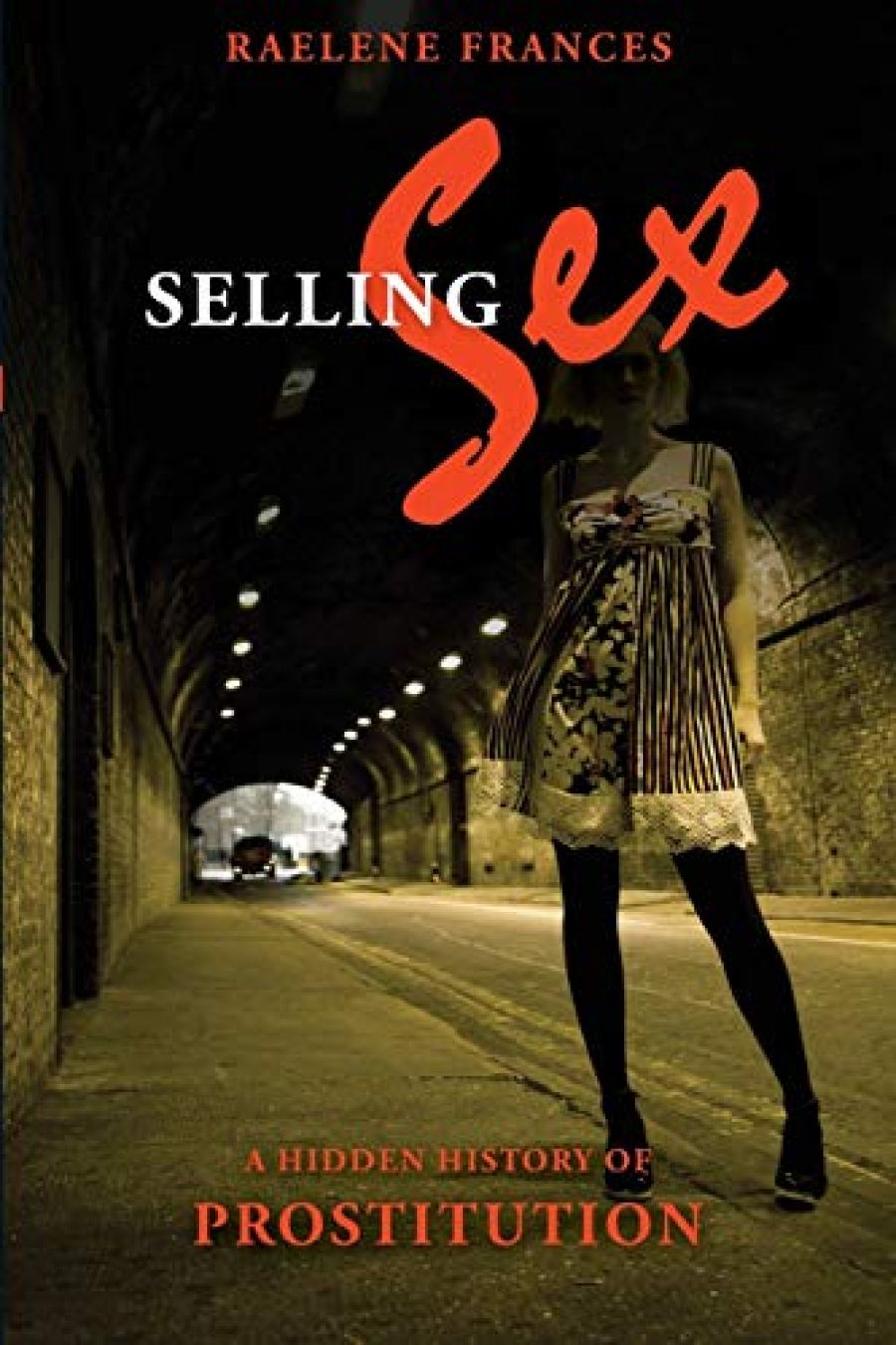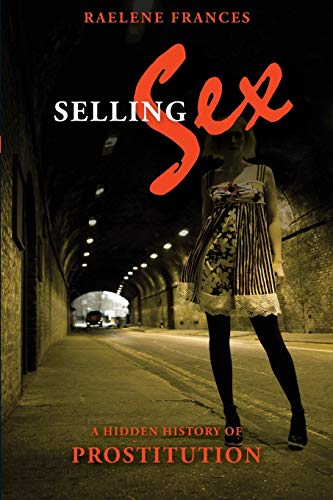
- Free Article: No
- Custom Article Title: Not Taking Sides
- Review Article: Yes
- Article Title: Not Taking Sides
- Online Only: No
- Custom Highlight Text:
Selling Sex provides a comprehensive history of prostitution in Australia. In 342 pages, Raelene Frances (currently Dean of Arts at Monash University) describes the changing nature of sex work in Australian society from the colonial period to the present day. Frances’s text is brilliantly researched and provides many important insights for readers interested in Australian history and culture, as well as the history of sex and gender.
- Book 1 Title: Selling Sex
- Book 1 Subtitle: A hidden history of prostitution
- Book 1 Biblio: UNSW Press, $39.95 pb, 342 pp
- Book 1 Cover Small (400 x 600):

- Book 1 Cover (800 x 1200):

Selling Sex opens with a striking anecdote about the statue of a prostitute named ‘Joy’. This statue was positioned in an East Sydney Street between 1995 and 1997. The statue attracted varied responses from members of the public. Some were ‘impressed’ by the statue and ‘treated [it) with affection’, while others found it ‘too confronting for comfort’. One elderly man also argued that ‘Joy’ was not ‘worthwhile’ in the way that ‘returned soldiers’ are. Frances suggests that these responses to the statue suggest the diverse views on prostitution that have circulated both within and outside Australia.
The first chapter of Frances’s text revisits the eighteenth century, when ‘[e)scaping the colony could provide a powerful incentive’ for many women to sell their sexual services to men. The author describes the stereotype that arose in the nineteenth century of the prostitute as a ‘fallen woman’ who needed to be ‘saved’ by religious organisations, and the concurrent debates about child prostitution and the trafficking in women for sexual purposes. Frances also describes the various legal reforms surrounding prostitution that took place during the late twentieth century, as well as the changes in working conditions in the brothels and ‘massage parlours’ that flourished in Australia’s inner cities during this period.
Frances's book reveals that there is still a stigma surrounding prostitution in today’s society. Many women still turn to prostitution for economic reasons. They also face the threat of diseases such as HIV/AIDS. However, as Frances points out, prostitutes in Australia today do have access to sex worker rights organisations and are less likely than before to be prosecuted for their work.
Frances does focus on Australian history, though she rightly acknowledges that ‘this is not just an Australian story’. She argues that ‘the history of prostitution also reveals a great deal about the history of sexuality’, and particularly male sexual demands. Furthermore, Frances argues that studying the history of prostitution can tell us much ‘about communities, colonies, empires and nations’. For, as she suggests, ‘attitudes to prostitution and movements to control or eliminate it’ have ‘crossed both national and imperial borders’. These attitudes have themselves been shaped by class, race and the changing social roles of men and women in Western countries.
The research that has gone into Selling Sex is impressive. Frances draws information from a range of historical textbooks, legal and medical reports, media articles, and excerpts of interviews with women who have worked in prostitution. I particularly enjoyed reading Frances’s interview with ‘Leonie’, a charming and articulate woman who began working in prostitution in Sydney during the early l 960s, and who has gained considerable financial success during her career selling sex. Frances skilfully uses the recollections of ‘Leonie’ to explain how ‘libertarian ideas’ about sex and sexuality began to impact on both prostitution and, more generally, Australian society during the 1960s and 1970s. These recollections also help debunk the persistent and patronising ‘fallen woman’ stereotype.
Additionally, I found Frances’s writing style to be highly engaging. Her prose is lucid and occasionally conversational. Frances has tried to make her prose accessible to as wide a readership as possible. Yet, in doing this, she does not oversimplify her material. Her arguments are consistently sophisticated, and are always supported by evidence.
In a single book, it would be impossible to adequately address every facet of prostitution in Australian history. Frances thoroughly describes the different experiences of Anglo-Saxon, Asian and Aboriginal women in prostitution. She also mentions the historical attitudes towards men of non-Anglo-Saxon backgrounds who have used prostitutes. However, she only briefly discusses the experiences of men and transsexuals (she consistently misspells this word as ‘transexual’) who have themselves sold sex. The lived experiences of these prostitutes have been described elsewhere (Roberta Perkins and Garrett Prestage’s 1995 edited collection, Sex Work, Sex Workers in Australia, comes to mind here). However, I felt that Frances could have enriched her analysis by considering what the experiences of male and transsexual workers might tell us about the changing nature of gender and sexual identity in Australia.
Also, Frances mentions that feminists during the 1970s objected to ‘the way in which prostitution laws discriminated against women selling sex but provided no penalty for the male clients’. However, she does not mention feminist debates about whether prostitution is an example of women’s oppression in a sexist and capitalist society. These debates have tended to take place between radical feminists, sex worker advocates and feminists of a distinctly libertarian persuasion. I respect that Frances might not necessarily have wished to ‘take a side’ in these debates, or to offer a political critique of prostitution. Nevertheless, overlooking these debates is problematic.
That said, though, Selling Sex is an immensely significant contribution to studies of work and gender in Australia. France’s broad-ranging bibliography and her accounts of episodes in the history of prostitution in Australia will certainly appeal to academics and students. It is to be hoped that her accessible prose attracts a readership beyond the university.


Comments powered by CComment